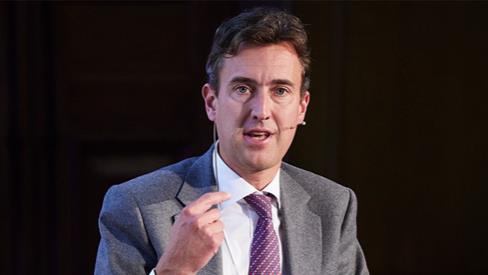“Well, they have the option to exit; they can sell their shares at the same price we offered to John [Fredriksen]. However, we also believe there is a shareholder base that sees much more long-term value in our strategy and want to remain in the company, and we are very happy to keep them on board. So every shareholder has a choice — stick with us or sell your shares.”
The deal brings to an end an 18-month stalemate between Frontline and the Saverys family after Fredriksen scrapped a $4.2bn merger plan that would have created the world’s largest publicly listed tanker company.
Under the terms of the agreement, which will require regulatory approval before it is completed:
| | • | | CMB acquires Frontline’s 26.12% stake in Euronav for around $1.06bn ($18.43 per share), leaving the Saverys family with a controlling 53% share of the voting rights and triggering a mandatory offer for the rest of the stock in the first quarter of 2024. |
| | • | | Frontline acquires 24 VLCC tankers from Euronav for $2.35bn, boosting the Frontline fleet from 65 to 89 vessels, making Frontline the largest pure-play tanker owner in the public domain measured by deadweight. |
| | • | | Euronav’s pending arbitration action against Frontline and affiliates are terminated. |
| | • | | Euronav’s listing on Euronext Brussels and the New York Stock Exchange are maintained. |
After 18 months of in-fighting and what both sides now admit was a “deadlock arising from their entrenched differences over strategy”, Fredriksen and the Saverys clan are finally free to set out their plans for what happens next.
For Fredriksen, the deal represents the critical mass he clearly craved.
Consolidation and scale was always the aim and presenting the deal to investors on Monday, Frontline chief Lars Barstad talked up the “huge cash generation potential” of this fully financed deal.
Frontline more than doubles its VLCC position by taking this route, upping its fleet 57% in dwt terms but adding 37% in terms of sailing days.
“This transaction will solidify Frontline’s position as the leading publicly listed tanker company, and significantly expand our exposure towards modern efficient VLCCs at an opportune time in the cycle,” Fredriksen explained in a statement announcing the deal.
By acquiring 24 modern, high-quality VLCCs, nine of which are scrubbed-fitted, he is both ensuring immediate cash flow generation into the winter season, but positioning Frontline as the largest player positioned to take advantage of a market with real upside left to come.
With the lowest VLCC orderbook since the 1980s, Chinese imports moving to an all-time high and Russian sanctions continuing to yield inefficient trading patterns, the bid to cement Frontline and the leading tanker powerhouse has all the hallmarks of a classic well-timed Fredriksen play.
But for Alexander Saverys, the longer-term play was the more important strategic priority, hence the stand-off between the two sides.
While Saverys has made clear from the start that he did not intend to exit the tanker business altogether, diversification via “a gradual decrease of the share of revenues coming from pure crude oil transportation by adding different shipping asset types to the Euronav portfolio” is now on the cards.
